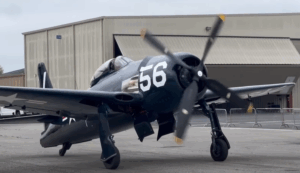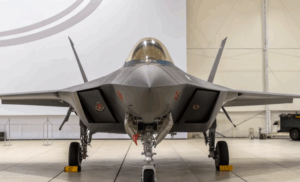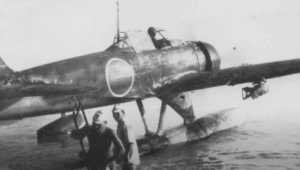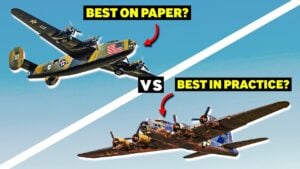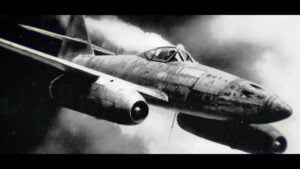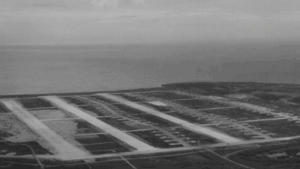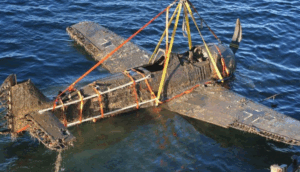Why This American Plane Was A Danger To Itself

YouTube / Dark Skies
Grumman wanted to develop an aircraft that could counter the MiG-15, a Soviet jet that dominated the skies of the Korean War. But the same aircraft soon turned out to be deadly, even to itself.
Development
The MiG-15 allowed the Soviets to gain the upper hand with its swept-back wingspan that enabled it to fly as fast as the speed of sound.
To counter the MiG-15, Grumman developed the Tiger under the designation “XF9F-8.”

It featured full-span leading edge slats and a trailing edge flap with roll control that utilized spoilers to enhance its maneuverability and control.
The Tiger’s fuselage was cylindrical with a triangular-shaped vertical tail. A Wright J65 turbojet engine powered the two prototypes with a top speed of 750 mph and a service ceiling of 40,000 feet.

The prototype was delivered in 1954 and took its maiden flight soon after.
A Surprise
The Tiger surprised the Navy by managing to reach nearly Mach 1 during its maiden flight. It also became the second Navy aircraft to break the sound barrier after the Douglas F4D Skyray.

Furthermore, pilots praised its handling characteristics while mechanics were pleased with the aircraft’s easy maintenance.
Following these milestones, the Navy approved the designation “F-11” for the Tiger and production began in mid-1955.
Unforeseen Circumstances
The operation for the Tiger was halted due to unforeseen circumstances.

First, the engine had issues despite its incredible potency. It was unreliable and the afterburners led to relatively short operational ranges, a red flag for Navy fighters at sea.
It also consumed fuel faster than the average turbojet engine, severely limiting the Tiger’s long-range capabilities.
Competing Against The Crusader
The Tiger’s introduction also coincided with the F8U Crusader.

Although the Tiger was quicker than the Crusader at sea level and had better-handling characteristics, it was 300 miles slower at 35,000 feet and lacked the Crusader’s superior combat range.
As a result, the Navy abruptly canceled its contracts with Grumman.
An Unusual Incident
Despite its short service life, the Tiger was involved in an unusual incident during its first tests.
In September 1956, test pilot Thomas Attridge took the skies aboard the F-11 Tiger to test its maneuverability, speed, and cannons.

He dropped the Tiger’s nose at 20 degrees and aimed at the ocean off the coast of Long Island. He then fired a short four-second burst, went into a steeper descent, and hit the afterburners.
However, the rounds’ energy was depleted and they fell back into the ocean. At over 7,000 feet, he felt something hit his canopy glass and the engine intake as the fighter started to lose its power.

Attridge bailed out and barely survived. He told his peers that a bird had struck him, only to find that his own bursts had actually hit him!














